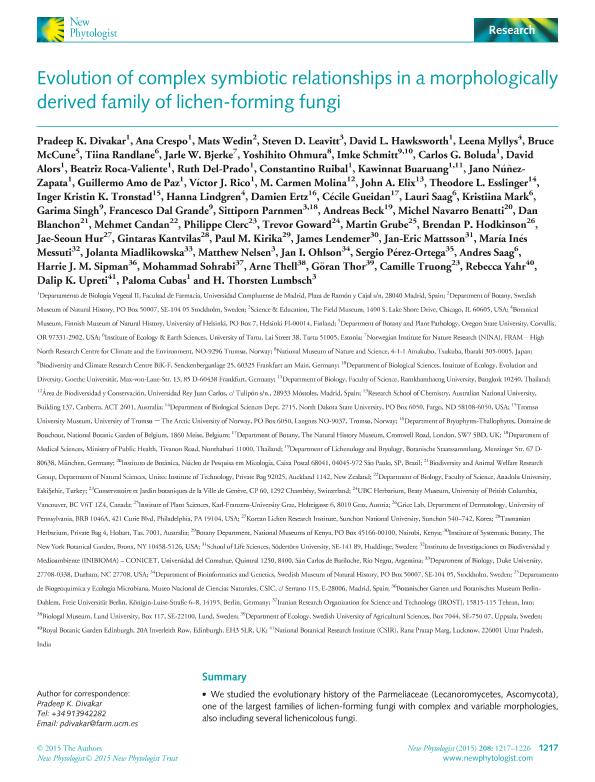Artículo
Evolution of complex symbiotic relationships in a morphologically derived family of lichen-forming fungi
Fecha de publicación:
12/2015
Editorial:
Wiley Blackwell Publishing, Inc
Revista:
New Phytologist
ISSN:
0028-646X
Idioma:
Inglés
Tipo de recurso:
Artículo publicado
Clasificación temática:
Resumen
- We studied the evolutionary history of the Parmeliaceae (Lecanoromycetes, Ascomycota), one of the largest families of lichen-forming fungi with complex and variable morphologies, also including several lichenicolous fungi.
- We assembled a six-locus data set including nuclear, mitochondrial and low-copy protein-coding genes from 293 operational taxonomic units (OTUs).
- The lichenicolous lifestyle originated independently three times in lichenized ancestors within Parmeliaceae, and a new generic name is introduced for one of these fungi. In all cases, the independent origins occurred c. 24 million yr ago. Further, we show that the Paleocene, Eocene and Oligocene were key periods when diversification of major lineages within Parmeliaceae occurred, with subsequent radiations occurring primarily during the Oligocene and Miocene.
- Our phylogenetic hypothesis supports the independent origin of lichenicolous fungi associated with climatic shifts at the Oligocene–Miocene boundary. Moreover, diversification bursts at different times may be crucial factors driving the diversification of Parmeliaceae. Additionally, our study provides novel insight into evolutionary relationships in this large and diverse family of lichen-forming ascomycetes.
Archivos asociados
Licencia
Identificadores
Colecciones
Articulos(INIBIOMA)
Articulos de INST. DE INVEST.EN BIODIVERSIDAD Y MEDIOAMBIENTE
Articulos de INST. DE INVEST.EN BIODIVERSIDAD Y MEDIOAMBIENTE
Citación
Messuti, Maria Ines; Evolution of complex symbiotic relationships in a morphologically derived family of lichen-forming fungi; Wiley Blackwell Publishing, Inc; New Phytologist; 208; 4; 12-2015; 1217-1226
Compartir
Altmétricas




